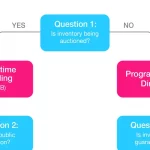
Crafting High-Impact CTAs in RTB Ad Campaigns: Driving Conversions Beyond Clicks
- Post
- August 9, 2023
- Ad Serving Tech, Real-time Bidding, RTB Strategies
- 0 Comments
When it comes to Real-Time Bidding (RTB) ad campaigns, capturing attention through clicks is only the first step towards success. Crafting High-Impact Call-to-Actions (CTAs) is where the real magic happens. These CTAs hold the key to converting casual clickers into engaged customers. In this comprehensive guide, we delve into the strategies that go beyond just clicks, enabling you to create compelling CTAs that resonate with your audience and drive meaningful conversions.
The Power of Precision: Crafting Targeted CTAs
Creating impactful CTAs starts with a deep understanding of your audience. Analyze their preferences, behaviors, and pain points. This insight allows you to craft CTAs that directly address their needs, resonating with their emotions and motivating action.
Instead of generic phrases like “Click Here,” opt for specific and action-oriented language. For instance, replace “Learn More” with “Unlock Expert Insights” to convey a clear value proposition.
Key Points:
- Understand your audience’s motivations.
- Utilize action verbs for more engaging CTAs.
- Tailor CTAs to align with specific audience segments.
Context Matters: Adapting CTAs to Content
The placement of your CTA within your ad content significantly impacts its effectiveness. Seamlessly integrate CTAs into the context of your message to make them feel like a natural progression of the user’s journey.
For longer-form content, consider placing CTAs at multiple touchpoints. For instance, within a blog post, you can strategically position CTAs after sections that relate to your offer.
Key Points:
- Blend CTAs with content for a seamless user experience.
- Use varying CTAs within longer content to maintain engagement.
- Leverage storytelling to lead users to the CTA organically.
Urgency and Scarcity: Driving Action with FOMO
Creating a sense of urgency or scarcity can significantly boost CTA effectiveness. Limited-time offers, countdowns, and exclusive deals evoke Fear of Missing Out (FOMO), compelling users to take immediate action.
When using urgency and scarcity, ensure transparency. If you promise limited availability, honor that commitment to build trust with your audience.
Key Points:
- Use countdown timers to instill urgency.
- Highlight limited availability or special promotions.
- Maintain honesty and transparency in your messaging.
Visual Appeal: Designing CTAs for Attention
The visual presentation of your CTAs plays a crucial role in catching users’ eyes. Make your CTAs stand out with contrasting colors, clear typography, and ample white space.
Test different button shapes, sizes, and colors to identify what resonates best with your audience. A/B testing is invaluable in optimizing your CTAs.
Key Points:
- Use contrasting colors for CTA buttons.
- Ensure clear and legible typography.
- Conduct A/B testing to optimize visual elements.
Personalization: Tailoring CTAs for Individuals
Customized experiences resonate more deeply with users. Leverage data-driven insights to personalize CTAs based on users’ browsing history, location, or previous interactions with your brand.
Dynamic CTAs that change based on user behavior can significantly enhance engagement and conversion rates.
Key Points:
- Utilize data to personalize CTAs.
- Implement dynamic CTAs for increased relevance.
- Balance personalization with user privacy concerns.
Social Proof: Leveraging User Feedback
Incorporating social proof into your CTAs can alleviate user skepticism and build trust. Highlight customer testimonials, reviews, or statistics that showcase the benefits of your offering.
Ensure the authenticity of your social proof. Fabricated testimonials can lead to a loss of credibility.
Key Points:
- Showcase real customer testimonials.
- Use relevant statistics to support your claims.
- Maintain authenticity to build trust.
Simplify the Action: Frictionless CTAs
Minimize the steps required to complete the desired action. Lengthy forms and complex processes can deter users from taking action. Streamline the conversion process to reduce friction.
Offer guest checkouts, pre-fill forms when possible, and eliminate unnecessary fields. The easier it is for users to convert, the more likely they are to do so.
Key Points:
- Simplify form fields and steps.
- Provide guest checkout options.
- Minimize distractions to keep the focus on the CTA.
Multi-Channel Consistency: Unifying CTAs Across Platforms
Maintaining a consistent CTA strategy across all touchpoints is crucial for reinforcing your message. Whether it’s your website, social media, or email campaigns, ensure that the tone, language, and design of your CTAs remain cohesive.
Consistency builds brand recognition and instills confidence in users.
Key Points:
- Keep CTA language and design uniform.
- Maintain a consistent tone across different platforms.
- Align CTAs with your brand’s messaging and values.
Data-Driven Refinement: Continuous Improvement
Even the most well-crafted CTAs can benefit from ongoing optimization. Regularly analyze data to identify trends, drop-off points, and areas for improvement.
Implement A/B tests, track conversion rates, and adjust your CTAs based on insights to ensure they remain effective over time.
Key Points:
- Analyze data to identify CTA performance.
- Implement A/B tests for continuous improvement.
- Refine CTAs based on real-time user behavior.
Final Words: Elevating Conversions with Strategic CTAs
Crafting high-impact CTAs in RTB ad campaigns is a dynamic and iterative process. By understanding your audience, creating urgency, personalizing experiences, and optimizing based on data, you can create CTAs that not only drive clicks but also generate meaningful conversions.
Remember, every element of your CTA, from language to design, contributes to its effectiveness. With the strategies outlined in this guide, you’re equipped to navigate the intricacies of RTB ad campaigns and harness the potential of CTAs for driving unparalleled results.
Commonly Asked Questions
Q1: How do I choose the right action verb for my CTAs?
A1: Start by considering the desired action you want users to take. Then, choose a verb that directly corresponds to that action. For example, if you want users to download a guide, use verbs like “Download,” “Access,” or “Get.”
Q2: Can I use urgency without misleading users?
A2: Absolutely. Honesty is paramount. If you’re using urgency, ensure that the time-sensitive information is accurate and that users genuinely benefit from acting quickly.
Q3: Is personalizing CTAs worth the effort?
A3: Yes, personalization can significantly enhance user engagement and conversions. Tailoring CTAs to users’ preferences and behaviors shows that you value their individual needs.
Q4: How can I maintain consistent CTAs across different platforms?
A4: Establish clear brand guidelines for CTAs, including language, design, and tone. Regularly audit your CTAs on various platforms to ensure they adhere to these guidelines.
Q5: What’s the best way to measure CTA effectiveness?
A5: Track conversion rates, click-through rates, and user engagement metrics to gauge CTA performance. Implement A/B tests to compare different CTAs and identify the most effective ones.




